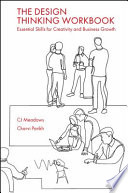

Design Thinking is a human-centered approach to innovation that draws from the designer's toolkit to integrate the needs of people, the possibilities of technology, and the requirements for business success. This idea emphasizes the importance of empathy in the design process, encouraging designers to understand the user experience deeply. It involves observing users, engaging with them, and gathering insights that inform the design. This iterative process helps in creating solutions that are not only functional but also resonate with users on an emotional level. By focusing on the user, Design Thinking fosters creativity and innovation, leading to products and services that meet real needs.
Continue readingThe book outlines the five stages of Design Thinking: Empathize, Define, Ideate, Prototype, and Test. Each stage is crucial in the design process. Empathize involves understanding the user's needs through observation and interaction. Define is about synthesizing the information gathered to define the problem clearly. Ideate encourages brainstorming and generating a wide range of ideas without judgment. Prototype is about creating tangible representations of ideas to explore solutions. Finally, Test involves gathering feedback on the prototypes to refine and improve the solutions. This cyclical nature of the stages allows for constant iteration and improvement, making Design Thinking a dynamic approach.
Continue readingEmpathy is a core component of Design Thinking, and the workbook stresses its importance in creating user-centered designs. By putting oneself in the user's shoes, designers can gain valuable insights into their experiences, pain points, and needs. The workbook provides tools and techniques for developing empathy, such as user interviews, shadowing, and creating empathy maps. This focus on empathy ensures that the solutions developed are relevant and meaningful to the users, ultimately leading to higher satisfaction and engagement.
Continue readingCollaboration is essential in the Design Thinking process. The workbook highlights the importance of diverse teams in fostering creativity and innovation. Different perspectives can lead to more comprehensive solutions, and the collaborative nature of Design Thinking encourages open communication and idea sharing. Techniques such as brainstorming sessions, workshops, and collaborative sketching are discussed to promote teamwork. The workbook also addresses the dynamics of team interactions, emphasizing the need for a safe environment where all voices are heard, and experimentation is encouraged.
Continue readingPrototyping is not just about creating a final product; it is a learning tool in the Design Thinking process. The workbook emphasizes that prototypes can take many forms, from low-fidelity sketches to high-fidelity models. The key is to create something tangible that can be tested and iterated upon. Prototyping allows designers to explore ideas, gather feedback, and make informed decisions. The iterative nature of prototyping helps in refining concepts and ensures that the final solution is well-aligned with user needs and expectations.
Continue readingTesting is a critical stage in Design Thinking that involves gathering feedback from users on prototypes. The workbook discusses various methods for testing, including usability testing, A/B testing, and surveys. The emphasis on feedback loops ensures that the design process is responsive to user input, allowing for continuous improvement. This iterative feedback mechanism helps in identifying flaws and areas for enhancement, ultimately leading to a more effective and user-friendly product. The workbook encourages a mindset of experimentation and adaptation, which is vital in today’s fast-paced environment.
Continue readingThe principles of Design Thinking can be applied beyond product design to various fields such as service design, organizational change, and social innovation. The workbook encourages readers to think broadly about how Design Thinking can influence their work and impact the world around them. By applying these principles, individuals and organizations can foster a culture of innovation, improve processes, and create solutions that address complex challenges. The adaptability of Design Thinking makes it a valuable approach for anyone looking to drive change and improve outcomes in their respective fields.
Continue reading